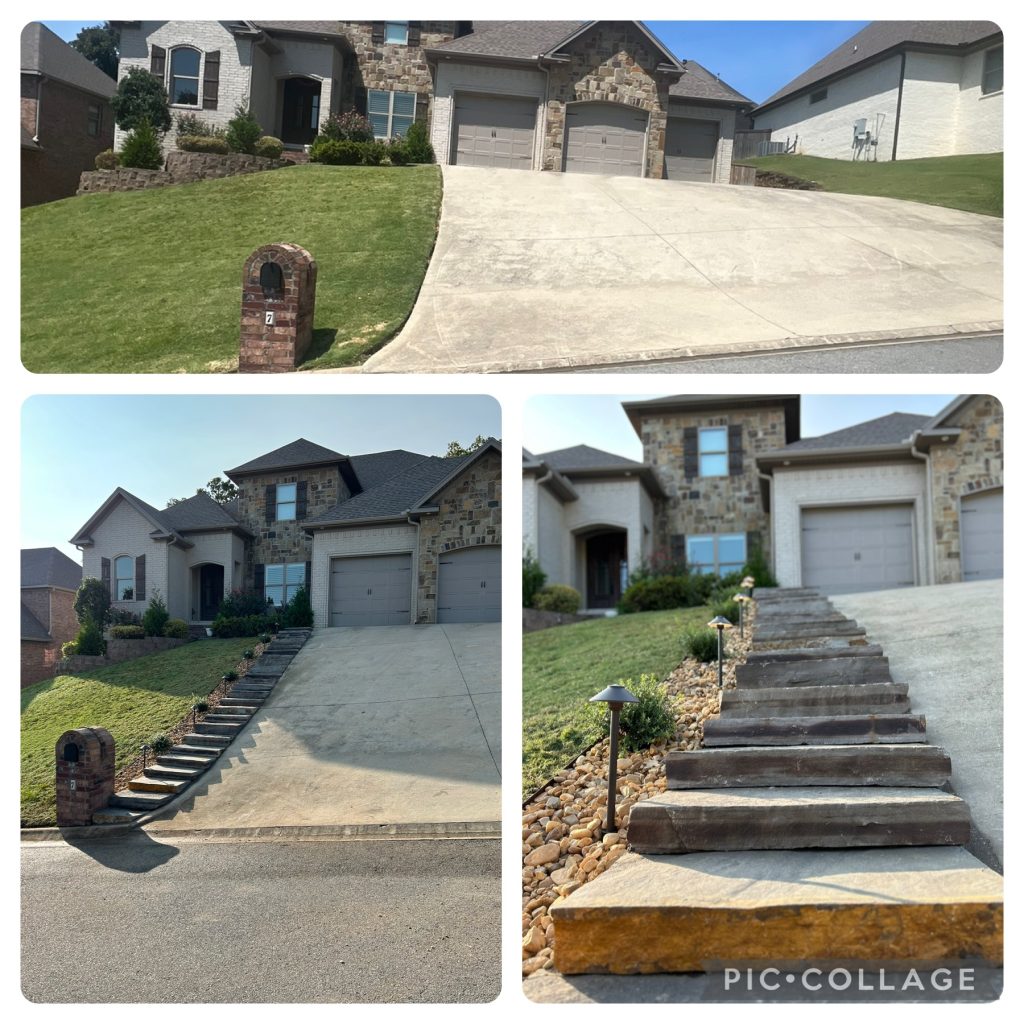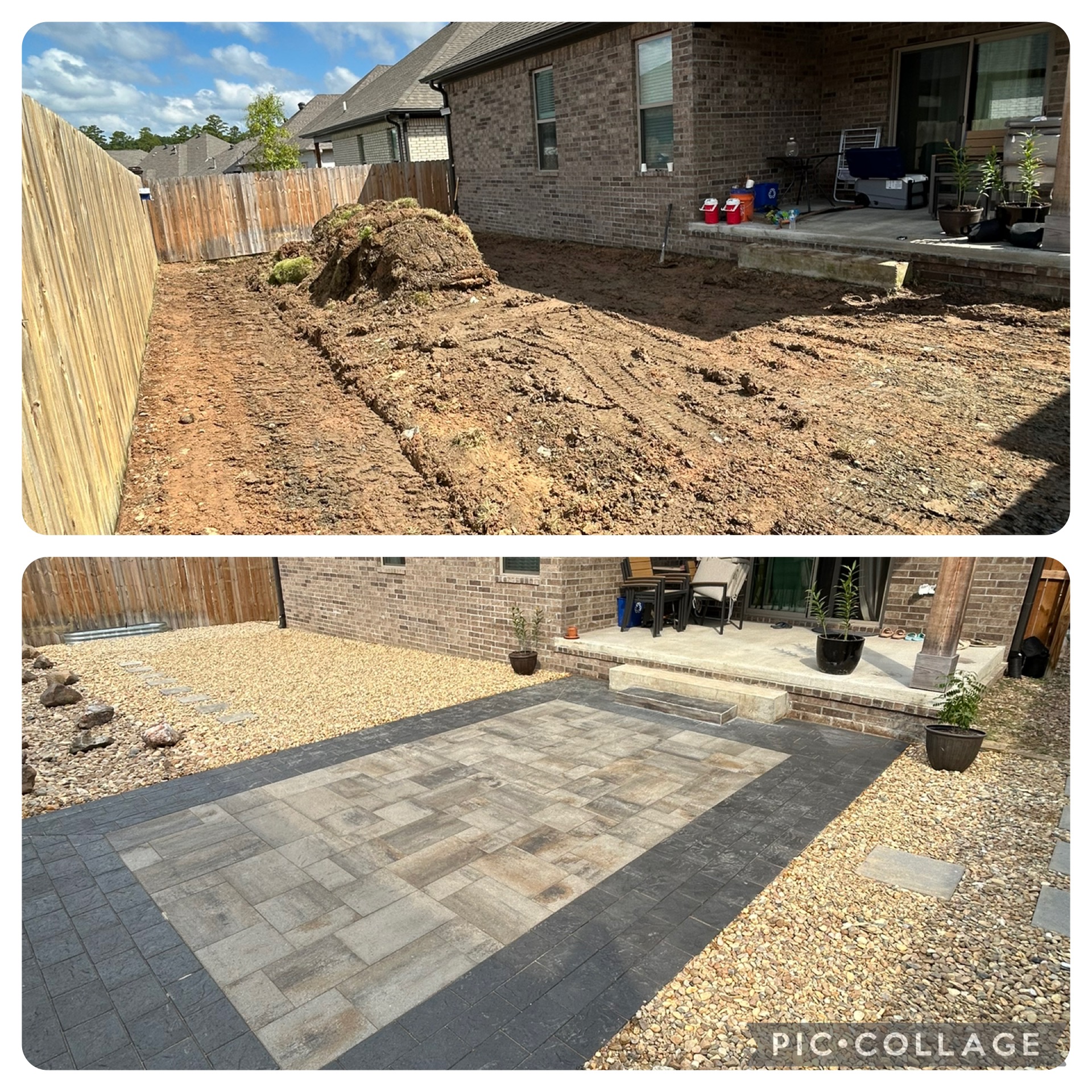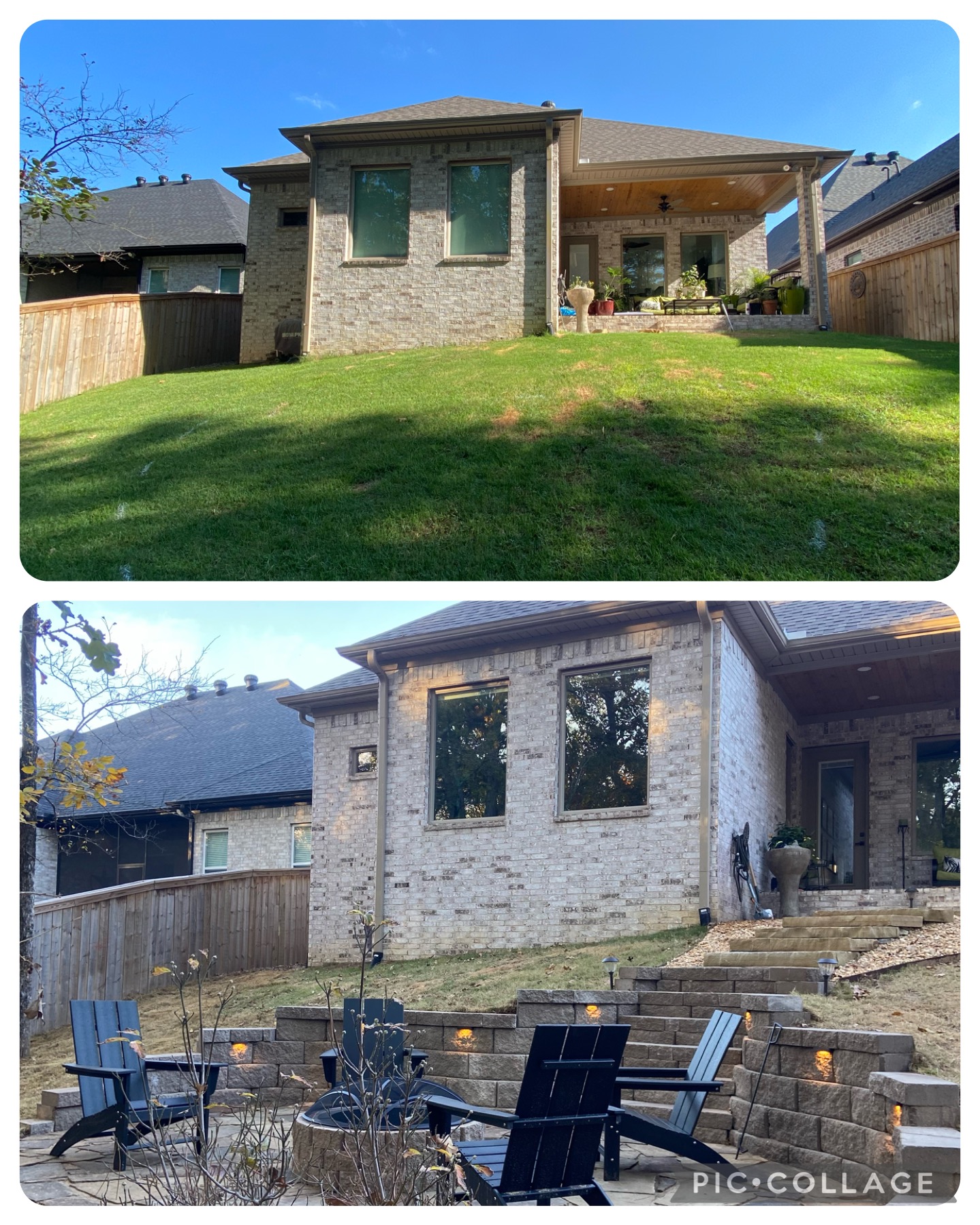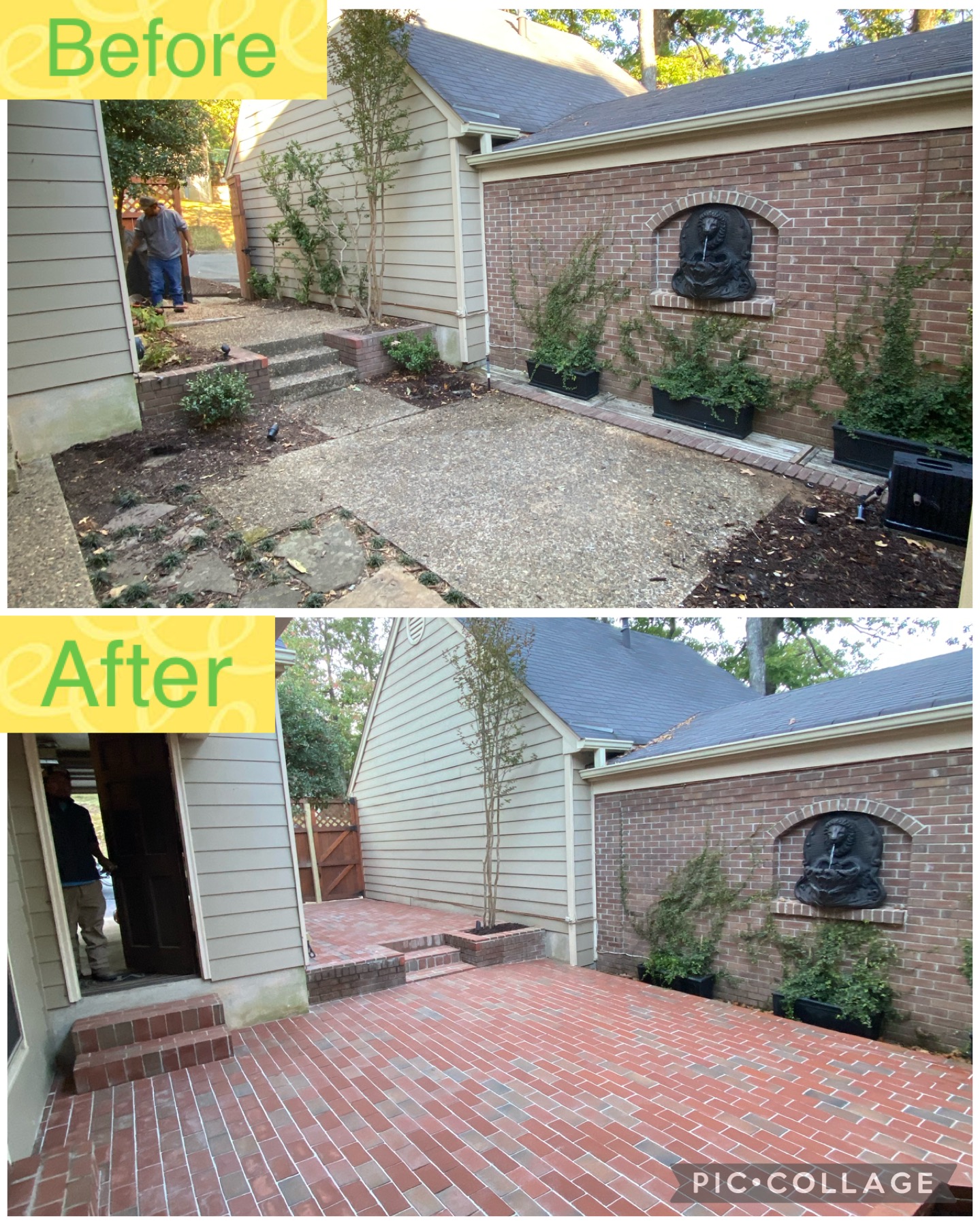Hardscape refers to the non-living elements in landscape architecture or garden design

These elements typically include structures like patios, walkways, driveways, retaining walls, steps, stone pathways, and other man-made features made from materials such as stone, brick, concrete, wood, or metal.
Hardscape elements are integral to the overall landscape design as they provide functional and aesthetic value, helping to define outdoor spaces, improve usability, and add structure and texture to the environment.
In contrast to “softscape,” which involves the living, organic components like plants, trees, and flowers, hardscape deals with the “hard” materials that are often permanent and require little to no maintenance.
Elements of Hardscape
Patios and Decks: These are flat, outdoor spaces often used for dining, relaxing, or entertaining. Patios are typically made of materials like concrete, stone, or pavers, while decks are usually constructed from wood or composite materials.
Walkways and Pathways: These are used to guide movement throughout a landscape. They can be made from various materials such as gravel, bricks, pavers, or natural stone.
Driveways: Hardscaped driveways provide a durable surface for vehicles and are often constructed from asphalt, concrete, or pavers.
Retaining Walls: These are structures designed to hold back soil and prevent erosion. They can also create level areas on sloped properties and are typically made from stone, brick, or concrete blocks.
Steps and Stairways: These provide access to different levels of a landscape and can be made from stone, concrete, or wood.
Fences and Gates: These provide security, privacy, and can also serve as decorative elements. Common materials include wood, metal, and vinyl.
Water Features: Ponds, fountains, and waterfalls are hardscape elements that add visual interest and the soothing sound of running water to a landscape.
Outdoor Kitchens and Fire Pits: These are functional hardscape features that allow for outdoor cooking and entertainment.
Pergolas and Gazebos: These structures provide shade and can be used to create outdoor living spaces.

Benefits of Hardscape
Functionality
Hardscapes make outdoor areas more usable by providing surfaces for walking, sitting, cooking, and entertaining. They can also direct foot traffic, define areas within a landscape, and offer support in sloped areas.

Low Maintenance
Unlike plants, which require regular care, hardscape elements are generally low-maintenance. They don’t need watering, pruning, or fertilizing, making them a long-term investment in landscape design.
Aesthetic Appeal
Hardscape can enhance the visual appeal of a property by adding texture, color, and structure. It complements softscape elements like plants, creating a balanced and cohesive landscape design.

Erosion Control
Retaining walls and other hardscape elements can help prevent soil erosion on sloped properties.
Durability
Hardscape features are built to last. They are made from durable materials that can withstand weather conditions and heavy use.
Design Considerations
Material Selection: Choose materials that complement the style of your home and the surrounding environment. Consider durability, texture, color, and how the materials will age over time.
Balance: Achieve a balance between hardscape and softscape. Too much hardscape can make a landscape feel harsh and unwelcoming, while too little may result in a lack of structure.
Drainage: Proper drainage is crucial when planning hardscape features. Ensure that water is directed away from structures and that there are no areas where water can pool and cause damage.
Climate: Consider the local climate when selecting materials. For example, in areas with freeze-thaw cycles, choose materials that can withstand these conditions without cracking.
Accessibility: Design hardscape features to be accessible to everyone, including those with mobility challenges. This might involve incorporating ramps, wide walkways, and handrails.
Sustainability: Opt for eco-friendly materials when possible. Permeable pavers, for example, allow water to seep through, reducing runoff and helping to replenish groundwater.


Maintenance of Hardscape
While hardscape elements are generally low-maintenance, they do require some care to ensure their longevity:
Cleaning: Regularly clean surfaces to remove dirt, moss, or algae. Power washing can be effective for materials like concrete and stone.
Sealing: Some materials, like pavers or concrete, may benefit from sealing to protect against stains and weather damage.
Weed Control: Weeds can sometimes grow in the joints of pavers or between stones. Regular weeding or the use of a weed barrier can help manage this.
Repairs: Over time, hardscape features may need repairs. For example, stones may shift, or cracks may develop in concrete. Address these issues promptly to prevent further damage.
Seasonal Care: In regions with cold winters, protect hardscape elements from freeze-thaw damage by ensuring proper drainage and covering delicate materials if necessary.
Hardscape is an essential component of landscape design that adds both practical and aesthetic value to outdoor spaces. By thoughtfully incorporating hardscape elements, you can create a landscape that is not only beautiful but also functional and easy to maintain. Whether you’re designing a small garden or a large outdoor living area, careful planning and the right materials can help you achieve a lasting and enjoyable space.
